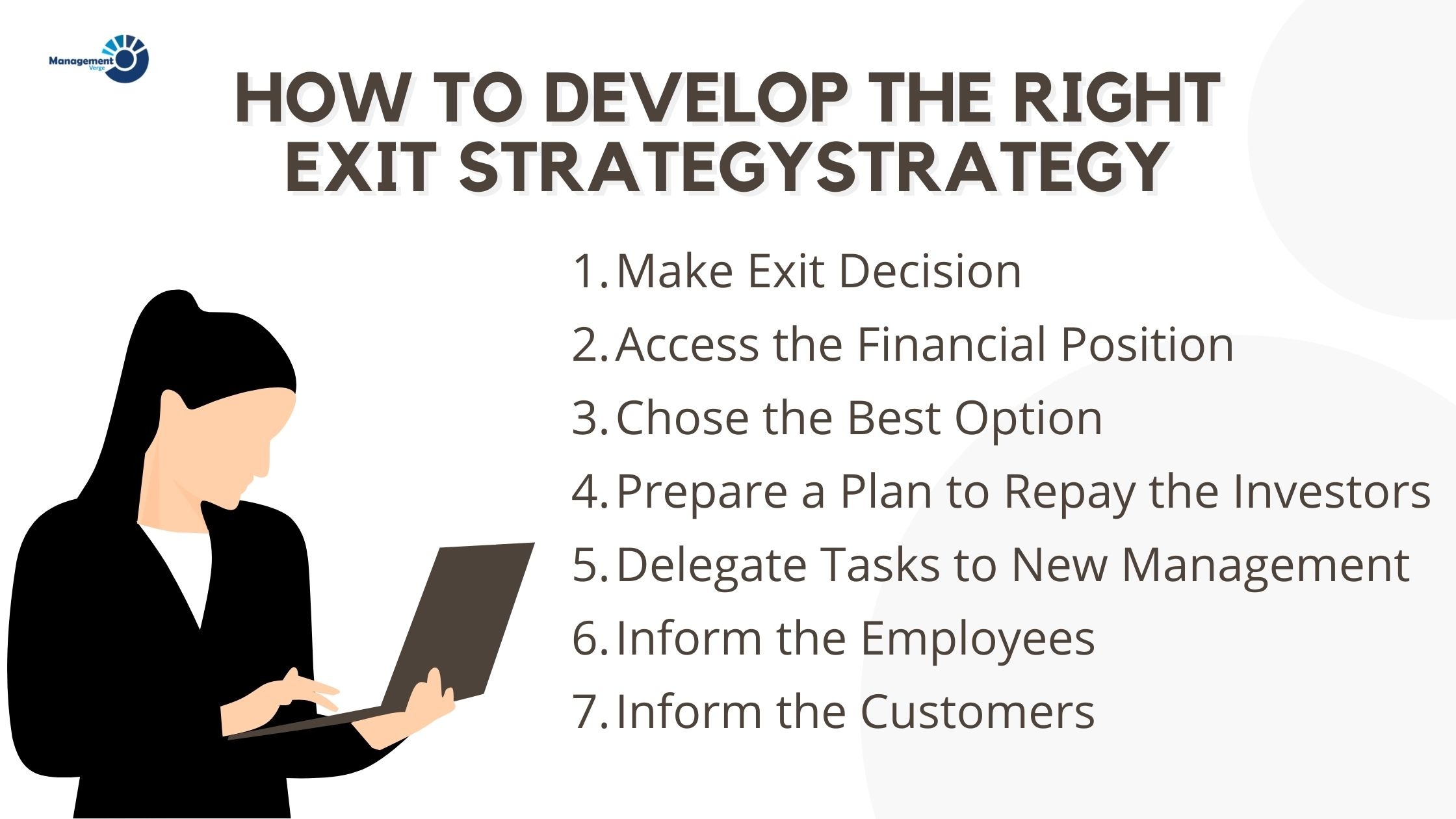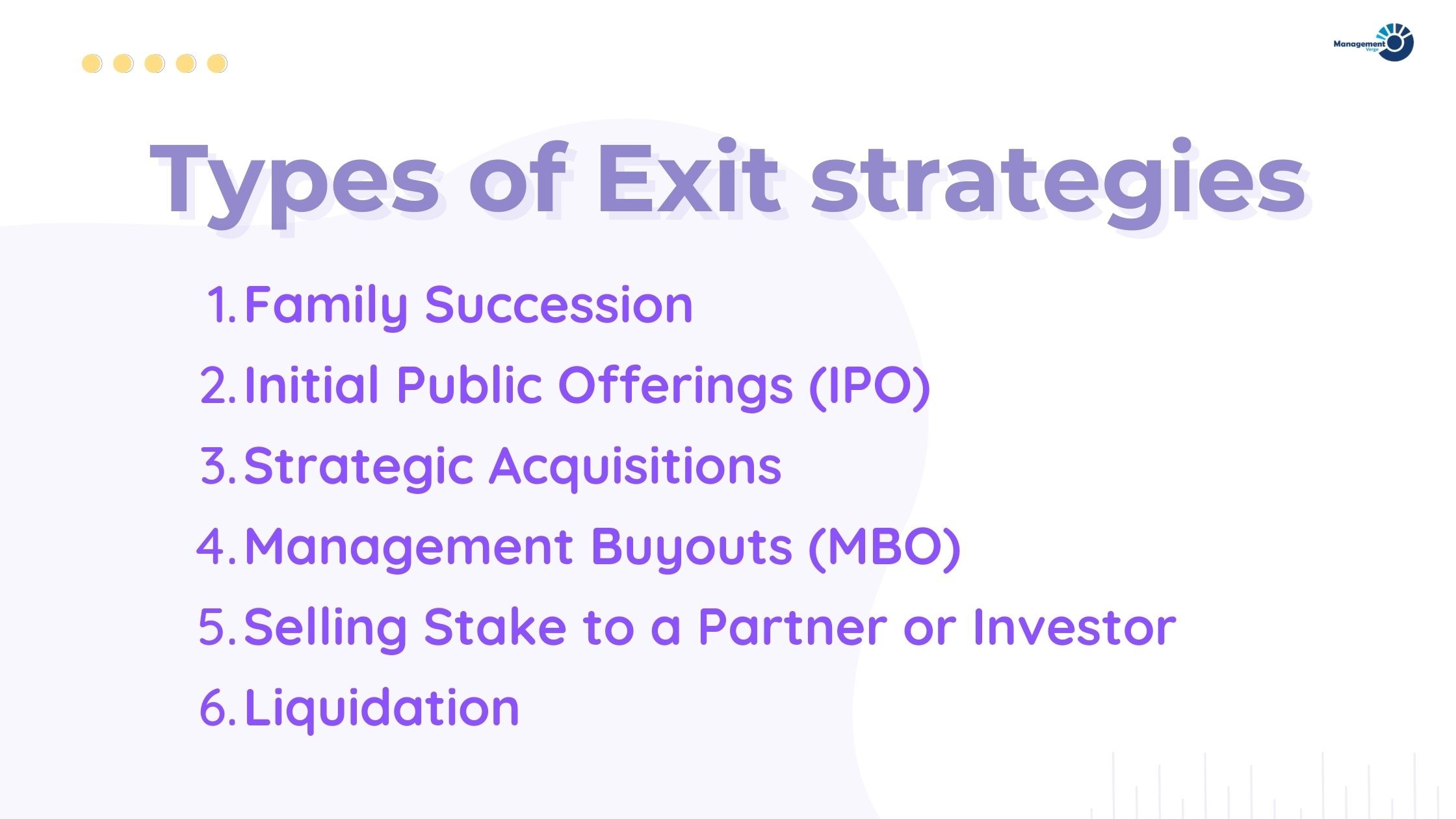An exit plan is needed when an investor wants to get out of an investment. Business owners or investors use exit plans when they want to close down an organization, successfully achieve the objectives, sell the firm, go through IPO (Initial Public Offering) and many other cases. So, a proper exit strategy is an essential part of a business plan. This blog will give a clear idea about what exit strategy is, how to develop an appropriate exit strategy in your business plan, exit strategy examples and some other things related to it.
What is Exit Strategy in Business Plan?
An exit strategy is often a part of the business plan. Exit strategies are important because they allow a company to be prepared in case it is forced to stop operating. Typically, an exit strategy can be defined as the course of actions to end a business. It could be true in some cases, but a good exit strategy goes beyond that. An exit strategy, broadly speaking, is a plan that pushes a company toward long-term goals and enables a flawless transition to a new phase, whether that requires reimagining business direction or leadership, maintaining financial sustainability, or pivoting for obstacles.
A business owner can reduce or liquidate his ownership in a company through an appropriate exit plan and, if the company is profitable, do so while still making a sizeable profit. It also helps the entrepreneur to reduce losses if the firm is unsuccessful. So, having an appropriate exit strategy in a business plan assists in protecting the owners, the company, and investors.
How to Develop the Right Exit Strategy For Your Company?

The exit plan can be different from company to company. For example, the exit strategy for a startup will be different from that of a more established company. The exit strategy for an established company may be to go public and for startups, it may be to sell the company or merge with another company. However, here are some common strategies to develop the right exit plan for your business.
1. Make Exit Decision
The first thing you need is to make the exit decision. Exit decisions can be made based on different circumstances. For example, successfully achieving the objectives, selling the firm, going through IPO (Initial Public Offering) etc. Once you make the decision to end up your business, it will lead you to the second step, which is preparing your finance.
2. Access the Financial Position
In order to develop the right exit strategy, you must have a clear idea about your personal and professional finance. So, preparing an accurate account of your personal and professional finance is one of the first steps for your exit strategy. Especially if you want to sell your business/investment to a third party, an accurate report on expenses, assets and business performance will help you to set the right value for your firm.
3. Chose the Best Option
Now you know how much your firm/investment worth. So, you can consider your options of ending up your business. The best options can be chosen based on your purpose or the current situation of your firm or investment. For example, if it is a startup you may go for finding a buyer but for an established company may be to go IPO.
4. Prepare a Plan to Repay the Investors
If you are running a relatively large company where you have some external investors, you must talk to them regarding your decision to sell your share. Make a plan that explains to investors how they will be paid back. Investors will be looking for proof that your ideas will work, so having a thorough grasp of your finances will be helpful in this.
5. Delegate Your Tasks to New Management
The art of delegation is significant to increasing productivity, but it will become more important once you’ve made an exit decision from your company. To ensure the smooth operation of your company even after you leave, you should start handing over some of your duties to new management while you complete your arrangements. Transferring additional tasks to others will be less difficult if your business plan already has written processes.
6. Inform the Employees
As you have successfully made your succession plans, now it is time to inform your employees about this. Your employees may have many questions, and it is better to make yourself prepared for them. The best way is to answer all of their questions with honesty. As you are going to make an exit, be empathetic and transparent to your employees.
7. Inform the Customers
Lastly, it is time to tell your consumers and clients about your exit. Also, introduce the new owner to your customers if your company will remain in operation under them. Give your consumers other choices if your company is permanently closed.
Exit strategy in Business plan – Examples

A company’s exit strategy is the process of finding a buyer for the company or selling off its assets. Moreover, exit strategies are often seen as a way to maximize shareholder value and provide liquidity to investors. There are many different types of exit strategies, and they should be chosen based on the individual needs of the company in question. Here is some common exit strategy in a business plan:
Family Succession
The family succession exit plan entails eventually handing over control of the business to the next generation, usually to the children or other relatives. Compared to other exit strategies, family succession does not need a lot of engagement from outside parties. When done correctly, it is also one of the simplest and most obvious solutions. By the way, family succession is mostly appropriate for small family businesses.
Initial Public Offerings (IPO)
Initial Public Offering (IPO) only applies to large-scale business organisations. A private company can go public through an initial public offering by selling its equity to the general public. A privately owned corporation becomes a public company through this procedure, which is also known as floating or going public. Generally, one or more investment banks underwrite an IPO and coordinate the shares’ listing on one or more stock markets. A corporation can raise equity funding from the general public through an IPO.
Strategic Acquisitions
The strategic acquisition is the process used by a company to merge with another firm. It is also called an acquisition strategy. In its broadest meaning, a strategic acquisition is a technique used by one firm to acquire or buy another in the expectation that the combination of both businesses would prove to be more profitable than each one acting alone.
Management Buyouts (MBO)
Through the management buyout (MBO) process, the management team of an operating firm purchases the company from the present owner by borrowing funds. To put it simply, a management buyout (MBO) is a transaction in which the management team pools its resources to buy all or a portion of the company they run.
Selling Stake to a Partner or Investor
The most frequent ownership change is selling the company to a partner or investors. Not that partners don’t fight and dispute, but selling to a partner is frequently one of the simpler transfers to accomplish legally. Most purchasing partners want to make the transition pleasant and swiftly remove the selling partner. It can be said that the impression that partners want to clarify the transaction and procedure so they can do it in the future while being morally upstanding.
Liquidation
According to Investopedia, liquidation is the process of shutting down a firm and distributing its assets among creditors and other stakeholders. Liquidation may be either mandatory or voluntary. The phrase “liquidation” is sometimes used to indicate that a business is prepared to sell part of its assets. For instance, a chain of retail stores could choose to shut down part of its locations.



Comments